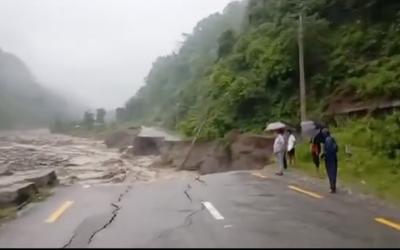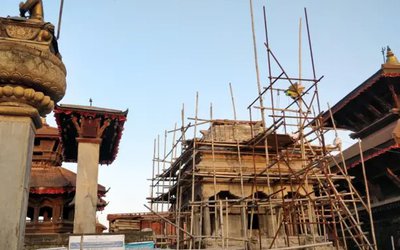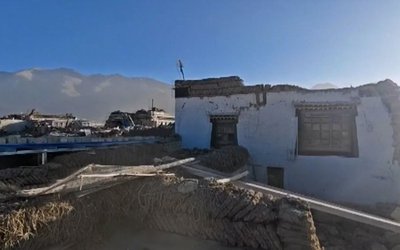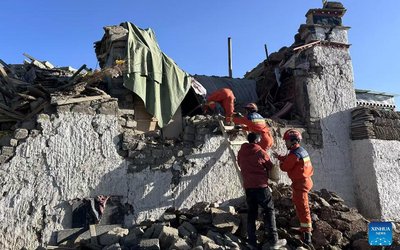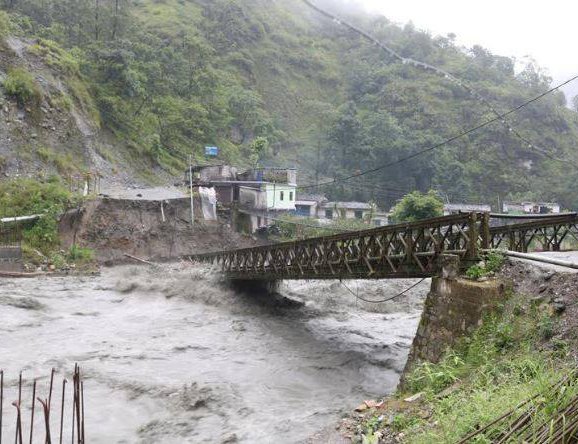
Yet again the trend is not very encouraging. It is just the beginning of the monsoon, whereas the damage is already devastating and economic losses (building and properties, infrastructure and services) are huge. To date, more than 80 people have lost their lives and 39 people are missing, while many families are displaced as well. The number of people affected is also growing. Because of many reasons (primarily weather conditions, poor visibility, and limited accessibility), both the rescue workers as well as relief supports are not reaching to the needy on time. As reported by our national televisions, even after the gap of 24 hours, many floods and landslides affected families (for example in districts like; Myagdi and Sidhupachowk) are waiting for the basic food, NFIs and other essential relief supports. So far 19 districts, both from the hills and terai are affected by severe landslides and floods respectively. Despite weather forecast report is shared with relevant institutions in advance, they did not manage to save lives and their properties on the ground. This situation gives sufficient to signal that our Early Warning System is not meeting the overall condition of the 'end to end' solution. Loose loops need to be tightened for making the existing EWS inclusive, smart and robust. In summation, this initial trend is clearly indicating that our preparedness is yet not 'up to the mark' and we need to revisit our approach to ensure that the planning prescriptions provided through the 'Preparedness Plan' are well translated into implementation, with immediate effect, top priority and in coordination with different relevant partners and stakeholders in the field.
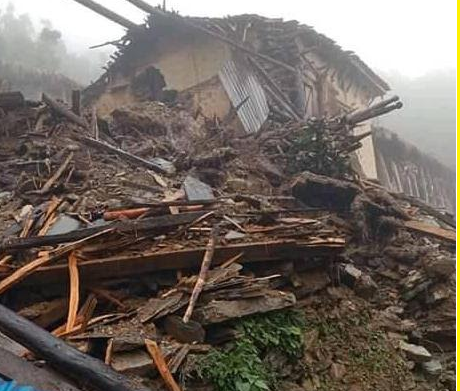
The situation is expected to be worse and more challenging in the days to come. The forecast clearly suggests more and more rain, which undoubtedly demands better preparedness and more proactive actions in the field. Our approach to flood and landslides management is still very generalist, which often restricts us to link our preparedness plan with the application of risk assessment and risk mapping tools and more importantly, prospects, capacity and challenges of field-level leading institutions. This situation further limits the best mobilization of our competing resources, trained rescue workers, disaster professionals and also effective usage of essential logistics and other life-saving supports. The present situation of flood and landslides management is further aggravated by the series of restrictions (social distancing, no gathering, adherence to health safety, limited vehicular movement, avoid crowding and so on) posed by the COVID-19 response. Besides, the majority of public buildings and other similar spaces are already under use for quarantine, isolation wards, COVID-19 hospitals, and other related facilities. In this situation, where to accommodate the flood and landslides displaced populations is going to be an immediate challenge to many terai and hill districts. The local team (provincial and municipal staff, security forces, Red Cross volunteers, civil society, journalists and others), is already tired and exhausted and thus the team needs to be re-energized, reinforced and re-incentivized for ensuring their best motivation and commitment in the field. The resources available at the local level must also be discussed while additional support should be mobilized accordingly.
It goes without saying, no matter what happens on the ground, it is the local communities and their local governments, who act as the first responders and play a critical role in saving lives and taking care of disaster-affected families. In a country with tough geographic terrain, smooth accessibility and timely reach is often a challenge. In this condition, it is always advisable to have an effective local government (supported by an energetic and vibrant provincial government) and empowered local communities. In addition, trained and skilled local partners and stakeholders are always found as a strong helping hand at the time of trouble. This fact needs to be acknowledged by our national authorities and therefore they should be spending less time at the center and more time in the field. The interaction and cooperation between all three layers of government should be strengthened and maximized. The national authorities need to take lead and work in this direction with utmost priority and enthusiasm. In the present context, field-level experiences and practical lessons should inform the policy prescriptions instead of policy dictating the practices on the ground. The local governments of Nepal therefore must be appropriately groomed and substantially strengthened while necessary training, technology, knowledge, skills and know-how should be decentralized further down to the wards and community level without any further delay. The grooming would only be effective, if the local governments are aggressively engaged and diligently involved in the entire process, starting from understanding of risk to implementation of priority activities targeted to different cycles of DRRM.
It is important to understand that our local governments are only recently given charge of managing the full cycle of DRRM in their local areas. In the past, their involvement was largely limited to providing life-saving support and distribution of emergency relief to disaster-affected families. As a result, the understanding and capacity of local governments in putting a well-coordinated and effective preparedness in place and implementation of other cycles of DRRM is very average. Our local governments, therefore, demand more sustained and handholding support to translate the policy guidelines prescribed by the national authorities into the ground level practices. While developing any policy documents, tools, and guidelines, we must simultaneously discuss and elaborate on how they will be implemented in the field and what resources and supports are needed for the same. Integration of local knowledge, skills and resources is pre-requisite for localizing the concept and making the solutions sustainable and resilient. Innovation is a must for improved local level disaster risk reduction and management. Introduction of risk reduction measures like; risk indexing, risk insurance and IFRC globally championed forecast-based financing (particularly when three days in advance forecasting is now available in Nepal) would be of a great boost in strengthening disaster preparedness, followed by a significant reduction in losses of lives and economic assets.In the given situation, an appropriate level of coordination and cooperation is absolute must between the District Disaster Management Committee (DDMC chaired by CDO) and Local Disaster Risk Management Committee (LDRMC chaired by Mayor) to achieve the necessary level of harmonization and synchronization in planning and actions on the ground.
Long-term measures are indispensable to find durable solutions, aimed at minimizing the losses of human lives and economic assets. How can a resource-constrained country like Nepal afford to cope with the present trend of rampant damage and destruction of precious infrastructure and services, almost in every alternate year? Where do we reach with development targets when on one hand, we keep building while on the other hand, we continue losing because of different disasters (including frequent floods, landslides, fire, earthquake and others) impact in the country. Keeping the local governments at the center, the government of Nepal must work simultaneously on Sendai Framework for Disaster Risk Reduction (SFDRR), 4 Priorities for Actions and implement them with top priority having all other key stakeholders and partners on board. The process of DRR must be multi-hazard, multi-sectoral, and multi-dimensional in approach.
Dr. Karna is an Urban Governance and DRR Specialist. He is presently working as a freelance consultant for UN and other DPs in Nepal and abroad. He is available at - sumankarna@hotmail.com.
- The NDRRMA's Role In Building Disaster Resilience: Why Leadership Matters
- Mar 07, 2025
- Missing On Early Warning – Pushed To Rising Death-Tolls And Losses Of Properties And Infrastructures
- Oct 07, 2024
- Building Climate Resilient Infrastructures - Way To Minimize Disasters Induced Damages And Losses
- Jun 21, 2023
- An Overview Of Early Warning System (EWS) In Nepal- How Inclusive And Resilient To Communities At Risk
- Oct 14, 2022
- Mainstreaming DRR And CCA Into Development Approaches- Indispensable To Secure SDGs Gains
- Jun 27, 2022


